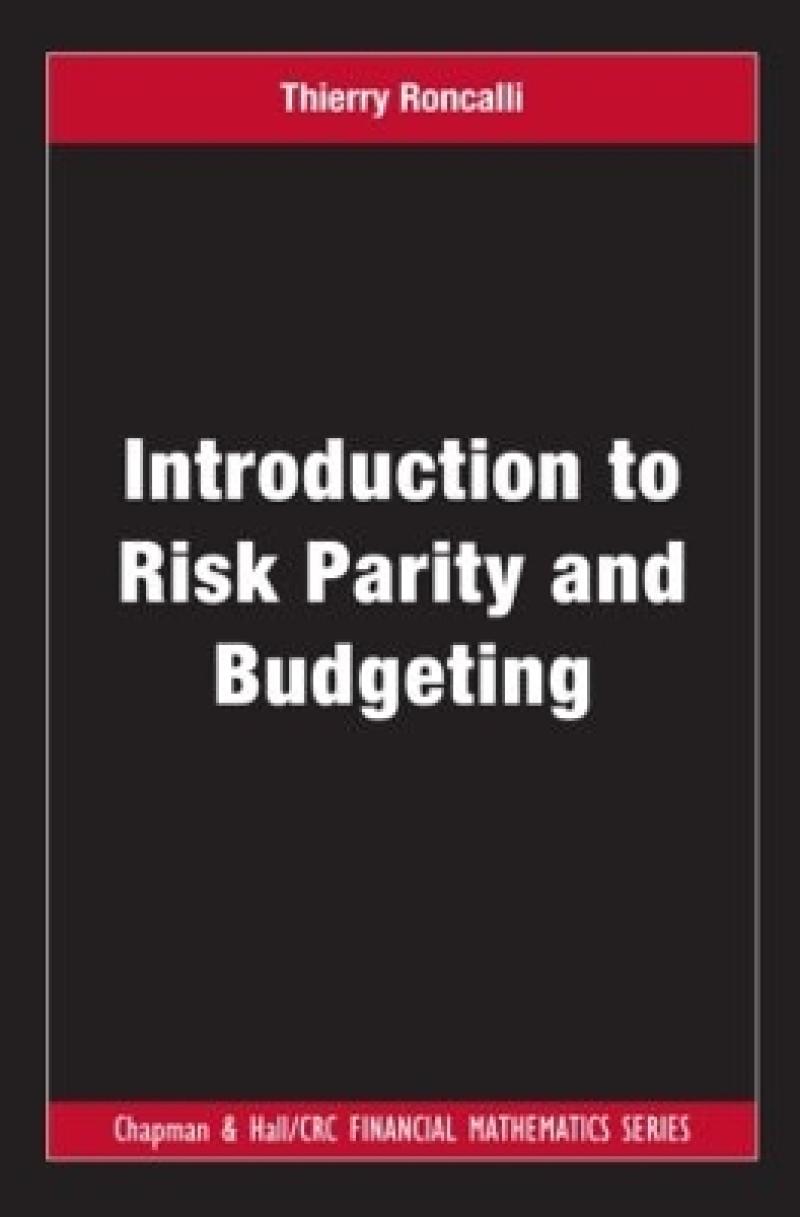<p>"This important book provides a complete framework for describing risk parity and risk budgeting while contrasting these approaches with traditional optimization methods. Roncalli does an excellent job of comparing simulations of strategies and approaches. A manager who reads this book—instead of reading a set of Wall Street research papers, consultant opinions, and some practitioner work—will be able to effectively discuss and evaluate all issues surrounding this important directional change in portfolio management. Through being evenhanded and generally unbiased in his conclusions, the author shows that risk parity is not a perfect solution but is an approach with significant merit that should be considered an important portfolio-structuring alternative and not a fad."<br />—Mark S. Rzepczynski, <i>Financial Analysts Journal</i>, July/August 2014</p><p>"… it offers a concise treatment of risk-based portfolio construction in general, not only risk parity. … it goes well beyond what I would call an introduction. … Graphs and tables are well chosen and help readers to better follow the storyline. One of the best features of the book is the set of well-thought out exercises that allow readers to understand the technical aspects of this interesting monograph. … a wonderful manual on risk-based investing for those already convinced this is the right way to invest."<br />—Bernd Scherer, <em>Quantitative Finance</em>, 2014</p><p>"Thierry Roncalli’s book situates the risk parity approach, which has become very popular with investors and managers, in a broader conceptual and technical context, which is that of risk budgeting. This publication is a must for investors who wish to gain serious insight into risk allocation issues." <br />—Noël Amenc, Professor of Finance, EDHEC Business School; Director, EDHEC-Risk Institute; and CEO, ERI Scientific Beta</p><p>"A mathematical tour de force of the paradigm shift in portfolio orchestration where the risk section plays bold notes to temper the return section, in a melodious harmony reflecting new trends in investment practice. A most current and comprehensive quantitative exposition of the evolution of modern portfolio theory, from mean-variance to risk parity methods, this book fills an important need for academics and practitioners who are looking for an up-to-date technical exposition of the art and science of portfolio construction."<br />—Sanjiv Ranjan Das, William and Janice Terry Professor of Finance, Santa Clara University</p><p>"Professor Roncalli’s masterful treatment on the subjects of risk parity investing and risk budgeting represents a significant contribution to the rapidly emerging literature on risk parity. This text provides an academically rigorous yet intuitive and understandable introduction to important topics like risk-based equity and fixed-income portfolio construction as well as asset allocation. The book surveys and pulls from seminar papers as well as frontier research in the risk parity field and provides a balanced and application-oriented discussion on the important nuances. This book is highly recommended for finance industry practitioners as well as students of financial engineering."<br />—Jason Hsu, UCLA Anderson School of Management</p><p>"Roncalli has written an excellent and balanced exposition of the risk parity approach to investing. This is very valuable reading for quant analysts and for technically oriented porfolio managers and asset allocators interested in this hot topic. The book covers everything from basic mechanics to advanced techniques and from the broad context of risk parity as one way to solve the general portfolio construction problem to detailed practical investment examples within and across asset classes."<br />—Antti Ilmanen, Managing Director, AQR Capital Management</p><p>"Thierry Roncalli has pioneered risk parity as a practitioner. His exhaustive and rigorous book is now <em>the</em> reference on the subject."<br />—Attilio Meucci, SYMMYS </p><p>"The traditional Markowitz portfolio allocation can be improved by using techniques where a specific amount of risk is allocated to an asset class yielding so-called risk-parity portfolios. Although it can be puzzling how this is done, this book takes the lead by providing not only the theory but also by showing in many examples how it can actually be done. It should be on the desk of anyone interested in modern portfolio allocation. The text should appeal not only to senior practitioners and academics but also to students since many no-nonsense problems are proposed whose solutions may be found on the author’s website."<br />—Michael Rockinger, Professor, HEC Lausanne and Swiss Finance Institute</p><p>"Thierry Roncalli’s book provides a rigorous but highly accessible treatment of all theoretical and practical aspects of risk parity investing. The author has been for many years on the forefront of research on building better diversified portfolios. His book will quickly prove indispensable for all serious investors." <br />—Bernhard Scherer, Chief Investment Officer, FTC Capital GmbH</p><p>"This exciting new book provides detailed and rigorous coverage of portfolio risk management beyond the Markowitz approach. Professor Thierry Roncalli studies the importance of risk parity and budgeting in portfolio design and offers a masterly account of this underdeveloped area of practical research. Definitely, the book is a must-read for graduate students in finance and for any investment professional."<br />—Professor Dr. Diethelm Würtz, Swiss Federal Institute of Technology, Zurich </p>
Produktdetaljer
Biographical note
Thierry Roncalli is head of Research and Development and a member of the executive committee at Lyxor Asset Management. He is also a professor of economics and finance at the Université d'Evry-Val-d'Essonne. Dr. Roncalli has 17 years of experience in finance and is the author of many articles and several books in quantitative finance. He received a Ph.D. in economics from the University of Bordeaux.
